Partnering for you and your patients
Zevra Therapeutics is dedicated to helping you and your patients have a seamless start to OLPRUVA® (sodium phenylbutyrate) for oral suspension treatment and providing support throughout therapy.
You and your patients have access
to the AmplifyAssist Team
Monday-Friday, 8 AM-6 PM Central Time,
at 1-888-668-4198.
Prescribing OLPRUVA
Submit an OLPRUVA Prescription Enrollment Form,
and the dedicated AmplifyAssist Team from the
specialty pharmacy will get to work helping to provide timely access to OLPRUVA.

Copay assistance available for eligible patients*

A single, designated specialty pharmacy to streamline the prescription process

Home delivery service

Kits containing 90 doses (up to 30 days of treatment) packaged in individual, easily transported, premeasured dosing envelopes

Support for your patients throughout their OLPRUVA experience
*Eligibility criteria and maximum limits apply. Contact the AmplifyAssist Team for details.
IMPORTANT: Inform your patients that they must answer or return calls
from the specialty pharmacy to have their prescriptions filled.

You start the process, and your
AmplifyAssist Team does the rest
You and your office

Complete the Prescription
Enrollment Form

You and the patient or caregiver
sign the form
- The patient/caregiver signature enrolls the patient for support and financial assistance and more

Fax the form to
1-888-668-2143
AmplifyAssist Team
Benefits verification
- Completes benefits verification and assists with prior authorization
- Helps with financial assistance options for eligible patients
OLPRUVA dispensing
Prescription delivery options are available to meet patient/caregiver needs:
- Home delivery
Reorder process
- Specialty pharmacy staff will proactively reach out to the patient/caregiver to schedule the next delivery/refill
Education
- Specialty pharmacy staff will address questions about OLPRUVA or UCDs throughout treatment
To learn more about AmplifyAssist, our patient support program for OLPRUVA, click here.
OLPRUVA patients and their caregivers shouldn’t have to feel alone. The AmplifyAssist Team will serve as their dedicated point of contract to help throughout treatment. The AmplifyAssist Team does not offer medical advice or replace discussions with a healthcare provider.
OLPRUVA Prescription Enrollment Form
Get started prescribing
Complete the form and fax it to the pharmacy at
1-888-668-2143
Prescription Enrollment Form

To prescribe OLPRUVA:
- Complete the Prescription Enrollment Form
- You and the patient or caregiver both sign the form where indicated
- Fax to the pharmacy at 1-888-668-2143
You can download the Prescription Enrollment Form, fill it out on your computer, print it, sign it, and fax it to the pharmacy. You can also print the blank form and fill it out by hand if you prefer.

Use the OLPRUVA
dosing calculator
Sign up to get
information and updates
about OLPRUVA
Indication and Important Safety Information for OLPRUVA
OLPRUVA [ol proo vah] (sodium phenylbutyrate) for oral suspension
Indication
OLPRUVA is a nitrogen-binding agent indicated as adjunctive therapy to the standard of care, which includes dietary management, in the chronic management of adult and pediatric patients, weighing 20 kg or greater and with a body surface area (BSA) of 1.2 m2 or greater, with urea cycle disorders (UCDs) involving deficiencies of carbamylphosphate synthetase (CPS), ornithine transcarbamylase (OTC), or argininosuccinic acid synthetase (AS).
Limitation of Use
OLPRUVA is not indicated for the treatment of acute hyperammonemia, which can be a life-threatening medical emergency that requires rapidly acting interventions to reduce plasma ammonia levels.
Important Safety Information
Warnings and Precautions
Neurotoxicity of Phenylacetate: Increased exposure to phenylacetate, the major metabolite of OLPRUVA, may be associated with neurotoxicity in patients with UCDs. If neurotoxicity symptoms of vomiting, nausea, headache, somnolence, or confusion are present in the absence of high ammonia levels or other intercurrent illnesses, consider reducing the dose of OLPRUVA.
Hypokalemia: Renal excretion of phenylacetylglutamine may induce urinary loss of potassium. Monitor serum potassium during therapy and initiate appropriate treatment when necessary.
Conditions Associated with Edema: OLPRUVA contains 124 mg of sodium per gram of sodium phenylbutyrate, and the Mix-Aid contains 5 mg of sodium per packet. Calculate the total amount of sodium based on the patient’s body surface area. If a patient develops new-onset edema or worsening edema while on treatment, discontinue administration of sodium phenylbutyrate and initiate appropriate therapy.
Drug Interactions
Valproic acid, haloperidol, or corticosteroids may increase plasma ammonia levels. Monitor ammonia levels closely. Probenecid may inhibit renal excretion of metabolites of OLPRUVA including phenylacetate and phenylacetylglutamine; monitor for potential neurotoxicity.
Use in Specific Populations
No studies with OLPRUVA have been conducted in subjects with renal or hepatic impairment. Monitor ammonia levels and in patients with hepatic impairment, it is recommended to start at the lowest dose that controls ammonia levels. Dose selection for elderly patients should be cautious, usually starting at the low end of the dosing range.
OLPRUVA should be used with caution in patients who are pregnant or planning to become pregnant. Report pregnancies to the manufacturer. There are no data on the presence of OLPRUVA in human milk, the effects on the breastfed infant, nor the effects on milk production. This should be considered when assessing the mother’s need for OLPRUVA.
Adverse Reactions
Most common adverse reactions (incidence ≥ 3%) are amenorrhea or menstrual dysfunction (irregular menstrual cycles), decreased appetite, body odor and bad taste or taste aversion.
You are encouraged to report negative side effects of prescription drugs to the FDA. Visit www.fda.gov/medwatch or call 1-800-FDA-1088.
This information is not comprehensive.
For additional information, please see full Prescribing Information for OLPRUVA on OlpruvaHCP.com.
Indication and Important Safety Information for OLPRUVA
OLPRUVA [ol proo vah] (sodium phenylbutyrate) for oral suspension
Indication
OLPRUVA is a nitrogen-binding agent indicated as adjunctive therapy to the standard of care, which includes dietary management, in the chronic management of adult and pediatric patients, weighing 20 kg or greater and with a body surface area (BSA) of 1.2 m2 or greater, with urea cycle disorders (UCDs) involving deficiencies of carbamylphosphate synthetase (CPS), ornithine transcarbamylase (OTC), or argininosuccinic acid synthetase (AS).
Limitation of Use
OLPRUVA is not indicated for the treatment of acute hyperammonemia, which can be a life-threatening medical emergency that requires rapidly acting interventions to reduce plasma ammonia levels.
Important Safety Information
Warnings and Precautions
Neurotoxicity of Phenylacetate: Increased exposure to phenylacetate, the major metabolite of OLPRUVA, may be associated with neurotoxicity in patients with UCDs. If neurotoxicity symptoms of vomiting, nausea, headache, somnolence, or confusion are present in the absence of high ammonia levels or other intercurrent illnesses, consider reducing the dose of OLPRUVA.
Hypokalemia: Renal excretion of phenylacetylglutamine may induce urinary loss of potassium. Monitor serum potassium during therapy and initiate appropriate treatment when necessary.
Conditions Associated with Edema: OLPRUVA contains 124 mg of sodium per gram of sodium phenylbutyrate, and the Mix-Aid contains 5 mg of sodium per packet. Calculate the total amount of sodium based on the patient’s body surface area. If a patient develops new-onset edema or worsening edema while on treatment, discontinue administration of sodium phenylbutyrate and initiate appropriate therapy.
Drug Interactions
Valproic acid, haloperidol, or corticosteroids may increase plasma ammonia levels. Monitor ammonia levels closely. Probenecid may inhibit renal excretion of metabolites of OLPRUVA including phenylacetate and phenylacetylglutamine; monitor for potential neurotoxicity.
Use in Specific Populations
No studies with OLPRUVA have been conducted in subjects with renal or hepatic impairment. Monitor ammonia levels and in patients with hepatic impairment, it is recommended to start at the lowest dose that controls ammonia levels. Dose selection for elderly patients should be cautious, usually starting at the low end of the dosing range.
OLPRUVA should be used with caution in patients who are pregnant or planning to become pregnant. Report pregnancies to the manufacturer. There are no data on the presence of OLPRUVA in human milk, the effects on the breastfed infant, nor the effects on milk production. This should be considered when assessing the mother’s need for OLPRUVA.
Adverse Reactions
Most common adverse reactions (incidence ≥ 3%) are amenorrhea or menstrual dysfunction (irregular menstrual cycles), decreased appetite, body odor and bad taste or taste aversion.
You are encouraged to report negative side effects of prescription drugs to the FDA. Visit www.fda.gov/medwatch or call 1-800-FDA-1088.
This information is not comprehensive.
For additional information, please see full Prescribing Information for OLPRUVA on OlpruvaHCP.com.



